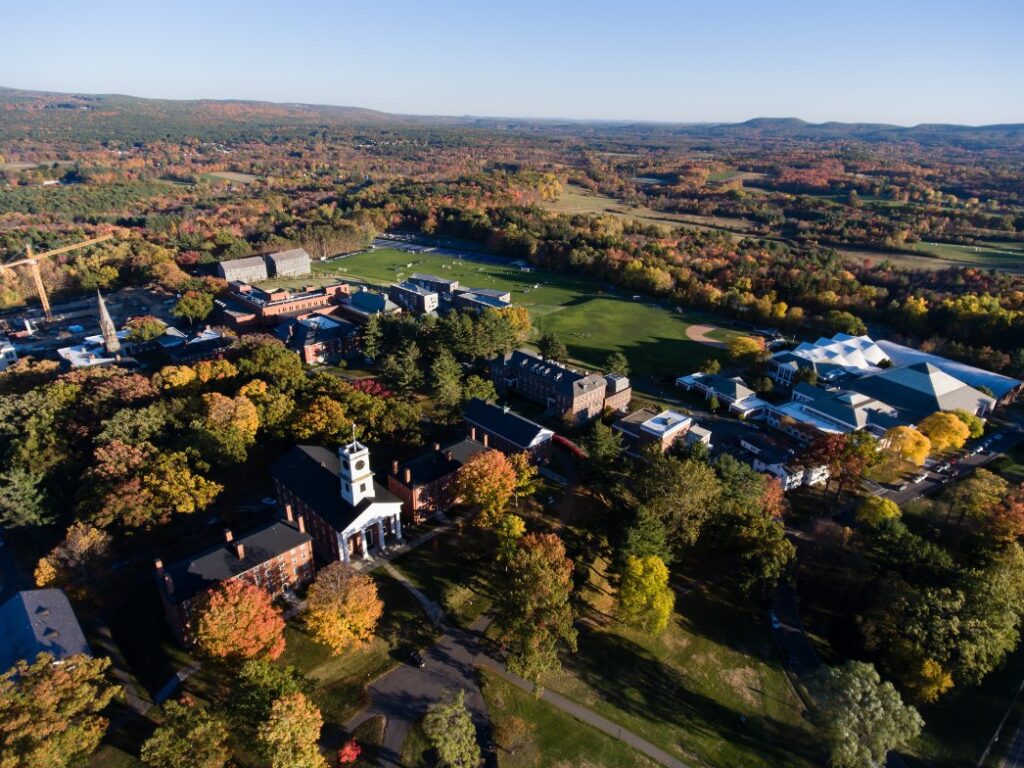Opinion: Amherst College’s Commitment To Sustainability Requires Better Management Of Its Trees

Amherst College. Photo: amherst.edu
The following column appeared previously in the Amherst Bulletin.
As an Amherst resident living in a residential neighborhood where all but a few properties are owned directly by Amherst College, I am deeply concerned with how Amherst College manages its off-campus property when it comes to trees.
The Amherst College campus itself is 1,000 acres and boasts many large, healthy and well-cared for trees. The college, in its own words, “strives to be a sustainability leader within higher education and stand as a model for other institutions.”
But the Amherst College board of trustees owns a considerable amount of Amherst property beyond those 1,000 acres and, based on my experience as a direct neighbor of many of these properties, sustainability has very little to do with how their off-campus lands are managed.
Since becoming a neighbor of Amherst College nearly three years ago, I have seen dozens of healthy trees cut down for the Lyceum project, purported by the designers, Bruner/Cott, to be “a smartly sustainable building, designed to support Amherst College’s commitment to carbon neutrality by 2030 and showcase low carbon construction.”
One of these trees, a significant old oak, housed an active fox den. When the tree was cut down (despite assurances to the adjacent Amherst College tenant by the campus-hired arborists that it would not be), I had to console a crying 7-year-old neighbor worried about where the foxes would go after their home had been destroyed.
“Why couldn’t they design the project so the tree could stay?” she asked me. I didn’t have a good answer.
Last fall, there were at least nine healthy trees (many of them quite large) cut down on college property directly across the street from my home. When my partner called the college to ask why, he was told it was due to moisture issues in the adjacent duplex. Cutting down these trees, predictably, has resulted in the lot being not only an eyesore, but also inundated with mud and street debris whenever it rains.
Given the efficiency of mature root systems in absorbing water, I can’t imagine that the removal of these trees has done anything but make those moisture issues worse.
Another case comes from when a former neighbor (an Amherst College faculty member living in off-campus housing) built a treehouse for their child. The treehouse spanned several mature trees in their backyard. When the tenant moved out of the property and left behind the treehouse (likely a liability for the college), rather than dismantling it, every tree it touched was cut down.
Just last month, I came out of my home to find a beautiful, massive old white pine (home to red-tailed hawks and many other species of native birds) on my property line being cut down for no apparent reason. “I don’t ask questions,” the arborist told me.
When my kids and others in the neighborhood got off the bus that day in front of the pine stump they, too, lamented its loss. “That was the only good tree in this yard,” one said. “Where will we hide from each other now?” said another. I contacted the college, as did a few of my neighbors, and we received a variety of conflicting stories about this healthy tree’s removal, ranging from placing the blame on the college’s off-campus housing management company to the tree being a threat to a single power line leading to a single, unoccupied home.
These are just the cases I have observed directly on my own street over a short period of time.
Amherst College, especially given its purported commitment to sustainability, needs to do better.
Trees provide essential habitat to a variety of birds, mammals, insects, and other lifeforms. They clean our air and filter our water. They sequester carbon, give us shade, and enjoyment and contribute immeasurably to human quality of life. Cutting down trees because it is the cheapest or easiest or most convenient way to solve a problem is lazy and irresponsible, especially when Amherst College has a $3.3 billion endowment.
This is no way to be a member of the Amherst community, especially when, according to the college’s own website, they envision a sustainable future “that is socially just and equitable, environmentally sound and resilient.”
Amherst College, perhaps you should stop paying lip service to sustainability and walk the walk in your own community. Planting new, small trees (which the president’s office indicated may be in the works in a recent email) is no substitute for the mature trees already thriving on your off-campus properties. These trees need to be maintained and designed around.
The unsustainability of your off-campus land management practices is a model to no one, least of all your students and residents of the Amherst community of which you are such a central part.
Britt Crow-Miller lives in Amherst.
